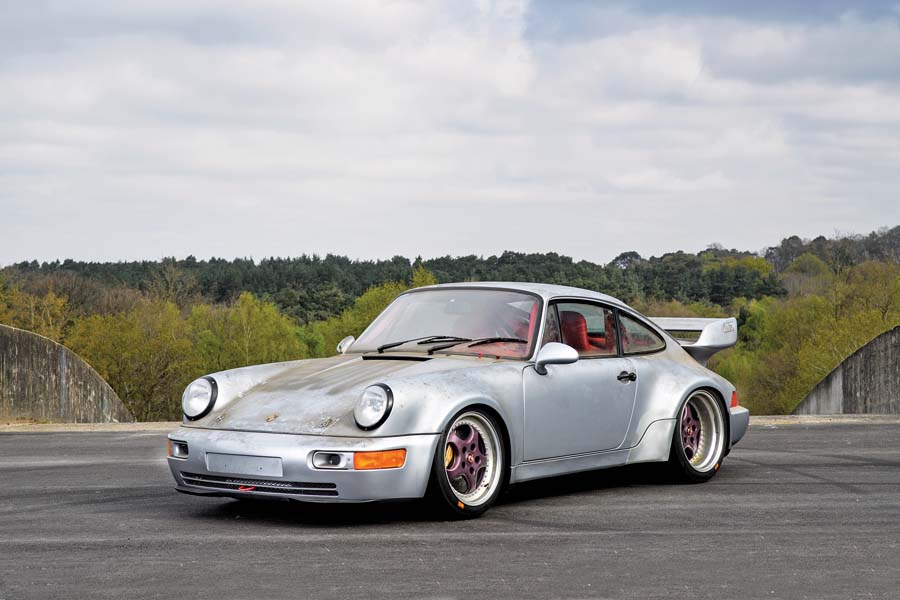- Only 10 kilometers on the odometer. This car is completely original and as-delivered
- Still covered with the factory-applied Cosmoline
- Special-order Polar Silver over Guards Red leather
- One of only 51 Carrera RSRs produced
- One of two with a fully trimmed interior
Imagine that as a die-hard Porsche fanatic, you wish to have the fastest and wildest 911 that the factory has to offer — a car that can handily compete on the track right out of the box. The choice is obvious: a new Carrera RS, or better yet — and faster still — the fully race-prepared Carrera RSR. You contact Porsche, and with considerable means, special-order such a 911 to your own unique specifications. However, once delivered and with only 10 kilometers recorded, this limited-production 911 vanishes into a private collection, where it remains untouched and never driven for almost 25 years, still covered with its factory-applied Cosmoline coating.
The exclusive Type 964 Carrera RSR, of which only 51 examples were built, was the Turbo-bodied racing version of the Carrera RS. It was fitted with a 3.8-liter type M64/04 RSR-specific engine. This dry-sumped, single-ignition powerplant developed an impressive 350 horsepower and 284 foot-pounds of torque, all fed through an uprated 5-speed manual transaxle. Unbiased reviewers viewed those official numbers as very conservative. A more realistic figure, they declared, was at least 375 horsepower. Car and Driver magazine produced a 0–60 mph result of 3.7 seconds, quicker than a Ferrari F40.
Ever dominant, the RSR racked up stunning race results from the outset, winning overall at the Spa 24 Hours, Suzuka 1000 Km, and 24 Hours of Interlagos. There was also a class victory at Le Mans, a 1–4 class sweep at the Daytona 24 Hours, and another class victory at Sebring.

